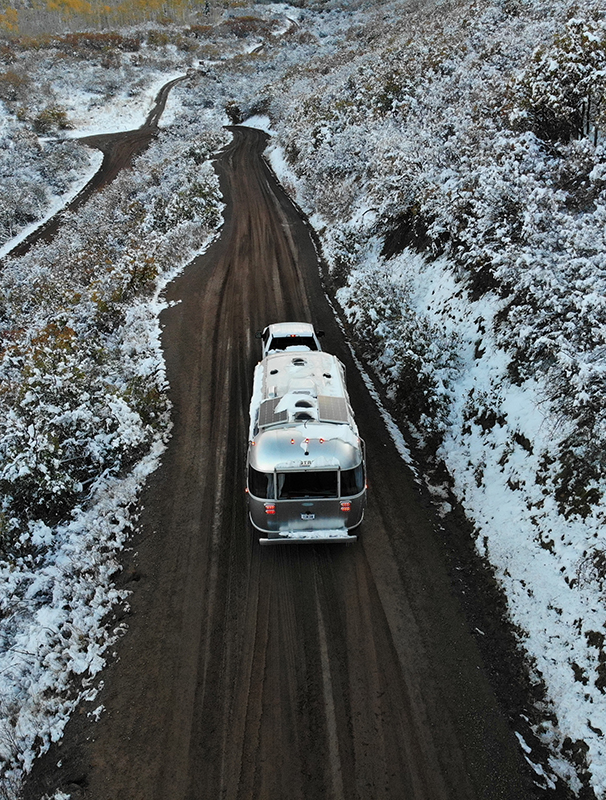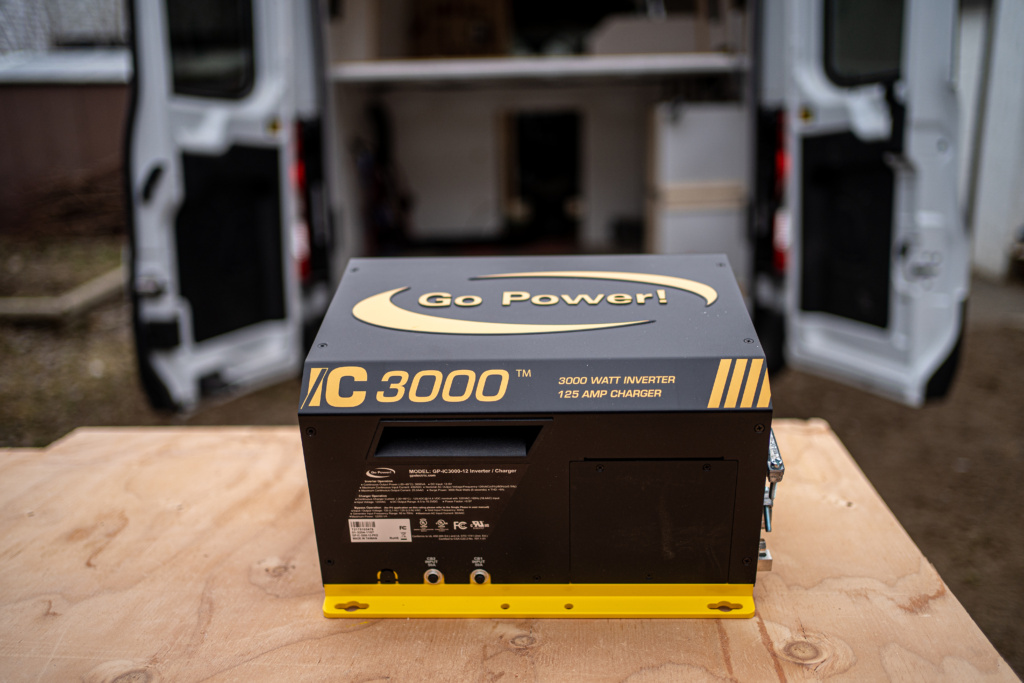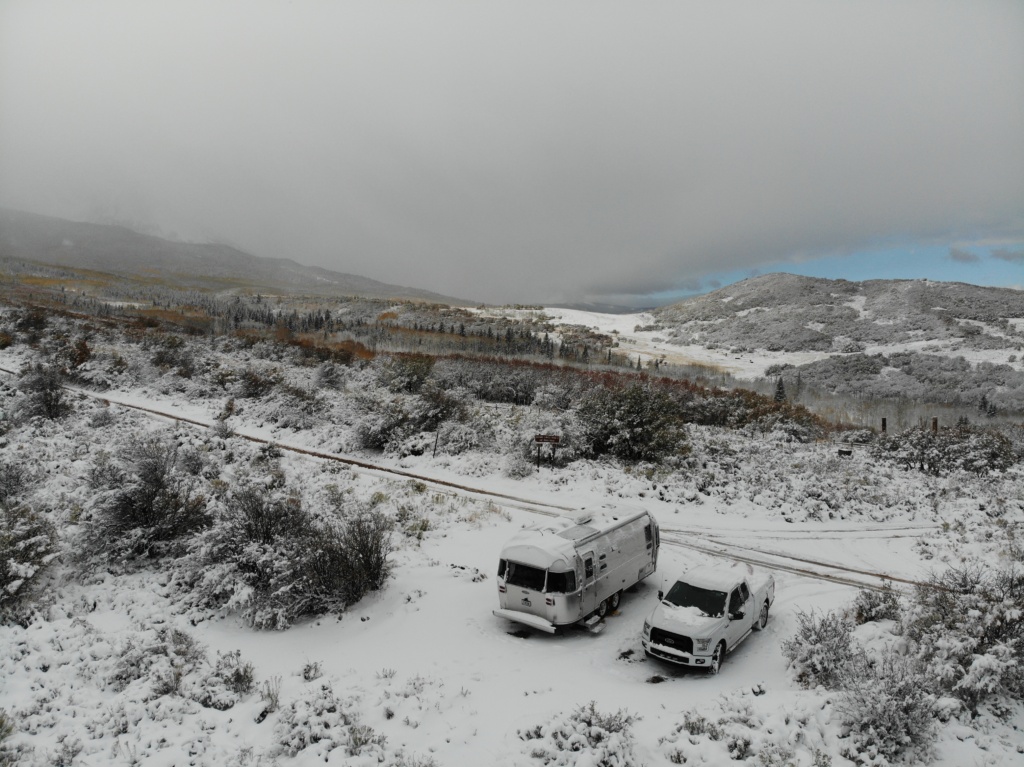MENUMENU
Menu
Power systems can be expensive. So cutting corners when it comes to winterizing your RV’s power system isn’t really an option.
More RV owners are embracing mobile living than ever before–and, in turn, need to be briefed on the ins and outs of winterizing RVs and travel trailers than ever before.
Today we outline how, when, and why to winterize your trailer. Let’s jump right in.
We know, we know: no RVer wants peak season to end…
…But when it does, winterizing your trailer is the only guaranteed way to extend the lifespan of your RV’s solar system.
Here are the top three reasons why you should care about the best way to winterize an RV:
If you’re routine about winterizing your RV’s power system, your batteries should last upwards of six years.
A common question we hear at Go Power! is, “At what temperature should you winterize your RV?” and “Do I need to winterize an RV if it’s being stored inside?”
Let’s tackle both of those questions. Firstly, the time to winter-proof your RV’s power system is in the winter–more specifically, any time of the year when the temperature is 32F or below.
Whether you are staying put, traveling, or storing your RV throughout the winter, it’s recommended to make your winterization plan the month before those winter temperatures kick in.
Why? Because RVers know to expect the unexpected, and between early drops in temperature, checking and charging your power system’s batteries as needed, and potentially purchasing extra supplies, you’ll want to give yourself an ample time cushion.
When it comes to thoroughly winterizing your trailer, there are three main components of its solar power system that need to be addressed: your RV’s batteries, solar panels, and charge controller and inverter.
Here are the top must-do’s for winterizing each of these components:
The bad news–your RV’s batteries are going to be your biggest concern during the winter, as sub-freezing temperatures heavily impact their operation.
The good news–whether you plan to store your RV or travel during the colder months, there are a multitude of ways to protect your batteries and keep them long-lasting for years to come.
Regardless of if you’re storing your batteries or using them during the winter,
If storing your batteries, do so in an insulated space like a garage or a basement that is kept above freezing (AGMs can handle temperatures lower than 20F). Once in its storage location, put the battery bank on a trickle charger or a wooden pallet. As an alternative, the batteries can be left in your RV on a trickle charger (but only if you know your trailer won’t go through sub-freezing temperatures!) Examples of a trickle charger are a solar panel or wall outlet, both of which keeps the batteries active while being stored. Make sure that you check the batteries’ charges monthly.
On the flipside, if you plan to travel or live in your RV during the winter then your battery type needs to be taken into account: since each individual type of battery has a unique minimum and maximum temperature range, it’s crucial to build your winter-proofing strategy around that. Switching to lithium-ion batteries or AGM batteries will also increase your power system’s wintertime longevity, versus flooded lead-acid batteries that have a decreased performance in cold temperatures.
Are you in an area where you’re 99.9% certain to get snow? Well, better get those solar panels winter-proofed then!
If you have flat panels installed on the roof of your RV and want to leave it outside throughout most of the winter, we recommend to either remove the panels and store them inside, ensure that the panels are adjusted at an angle so that snow slides off more easily, or keep snow accumulation to a minimum if deciding to keep them flat.
And if you want to keep them in use all winter long? Well, consider altering the solar panel angle for both maximum snow meltage and maximum sun exposure. Remember that removing heavy snow loads is a non-negotiable!
Pro Tip: For the best protection, here are four tips straight from the professionals at Go Power! for keeping your solar panels in good shape:

Bonus–“Do I Need to ‘Winter-Proof’ My Trailer If I Live in a Warm Climate?”
No, if you are enjoying balmy weather or live somewhere with a temperate climate then there is no need to store your RV’s solar power system.
However, if your trailer is parked indoors or is in chronically low sunlight then you can apply the cold climate storage directions above!

Last is your RV’s charge controller and inverter, which should be at the bottom of your priority list when winterizing your trailer. Both charge controllers and inverters have a wide temperature range that they can function under, and sub-freezing temperatures don’t typically shorten their lifespan.
To winter-proof yours, it’s recommended to store both in temperatures anywhere between -31F and 175F. Safe operating temperatures are generally between -4F and 158F. Talk about flexibility!
No, if you are enjoying balmy weather or live somewhere with a temperate climate then there is no need to store your RV’s solar power system.
However, if your trailer is parked indoors or is in chronically low sunlight then you can apply the cold climate storage directions above!

From our start as a small Canadian distributor of solar energy products to one of North America’s leading suppliers of recreational and business solar solutions, one thing has stayed the same: our dedication to helping RVers make the most of their solar energy systems.
Want to learn more about winterization? Contact our support team today for technical support, installation assistance, and frequently asked questions.